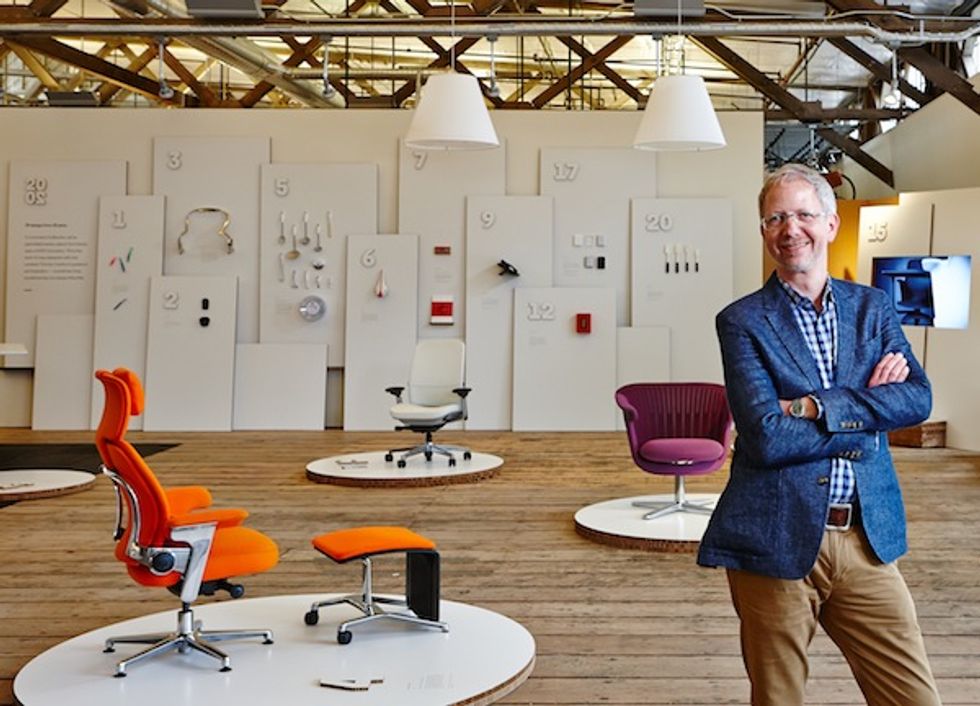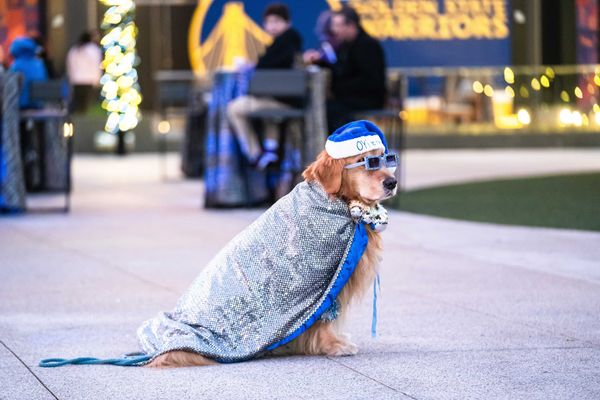Fans of industrial design objects like Brooks England's stylish leather bike seat, Oral-B’s Squish Grip toothbrush, and the modern whisk have Thomas Overthun of IDEO to thank.
IDEO celebrated the associate partner and design director, who's been with the company since 1993, with a 20-year retrospective of the objects he’s influenced—including those above—at their San Francisco headquarters on February 26. We caught up with the innovator to reflect back on his design legacy and tell us what he has in the works:
Schuyler Bailey: What object that you've designed over the past 20 years is your favorite?
Thomas Overthun: The Zyliss kitchen tools were the largest range of products we had designed at IDEO at the time, and cooking is something I love to do. The most difficult one to design was the whisk, and for that reason it is my favorite. It was just so hard to think of something new to do with a whisk. People seemed to be happy in general with the way whisks up until that point had worked, apart from the fact that it can take a lot of time and strength to whip up some egg whites, and they are not easy to clean. Then I came across the Japanese tea whisk, which is a beautifully crafted thing made of bamboo. It became the inspiration for the Zyliss whisk with the open end that doesn’t trap gunk and soft wires that froth liquids faster.
SB: Which design do you consider your most successful?
TO: The Steelcase Node chair, for its impact on students’ life in the classroom. Our client saw the chance to have an impact in the educational furniture category—a space that had been lacking in innovation. We learned that the old tablet arm chair had become a negative icon and representative of the old way of top-down teaching. It was very static, confining the students in a rigid and unforgiving mini-environment. We designed the Node chair to give students the possibility to move, turn, interact with their peers, adjust it to their needs - overall it embraced a more human approach. We use them a lot in our studio when all the hot desks are booked up.
SB: If you could go back and change the design of one object, what would it be?
TO: When I was a student, my friend and I designed a BB gun. I think that we were inspired by the first Rambo movie—and the possibility to make a little money. I remember having an uneasy feeling doing it. However, the client in question never manufactured any of our designs. My worry was somewhat unfounded until about a year later, when my friend called me and made me look into a store window, and there it was. It was as if my flashy marker rendering had become three dimensional—they had made the design real and bought it to life down to the last detail.
SB: What's the biggest change at IDEO since you started 20 years ago?
TO: The breadth of design challenges that our clients throw at us has really evolved. When I started at IDEO, it was called IDEO Product Development, and that’s what we did. Today, our definition of design is much broader, and it’s because our clients are curious to see if design can solve much more complex, sticky problems, from products, to services, to experiences, to many parts of an entire system. We find ourselves asking ourselves, “We have never done this before; can we do it? What might our answer to this question be?” It’s almost impossible to resist if someone asks you a good question, and our clients tend to ask really good questions...
SB: What are you working on that you're most excited about?
TO: Currently, my team and I are working on technology that is implanted into people. This is an amazing area that is both very advanced and rife with opportunity for improvement, particularly from a human point of view. We’re always thinking—if this implanted technology is helpful for sick people—there might also be positive applications for healthy people. That’s a very fine ethical line emerging.
SB: How does the Bay Area influence your work?
TO: In the Bay Area, we have a unique mix and lovely balance of technology, food, and access to nature—three things that I love. For me, technology often equals career, food is indulgence and enjoyment, and nature is relaxation, inspiration, and health. For other people living here, food might be their career, and they might use technology to get people to know about it, and nature to source it. As a result, the presence of the three groups makes it possible for an interesting variety of people to live here together.
SB: What kinds of innovations do you look forward to in the next 20 years?
TO: I look forward to some big and some small things: shorter commutes because of better public transport and denser, more mixed neighborhoods; ever smarter environments anticipating my needs in a continuum of home, work, and travel life. Continuous low level health tracking guiding us to better behaviors and fewer medical interventions. However, I remain curious whether delightful air travel will ever make a comeback. At IDEO we enjoy looking ahead at how we make and build things, particularly as technology becomes more advanced. This Made in the Future site captures our latest exploration in a playful way.


























